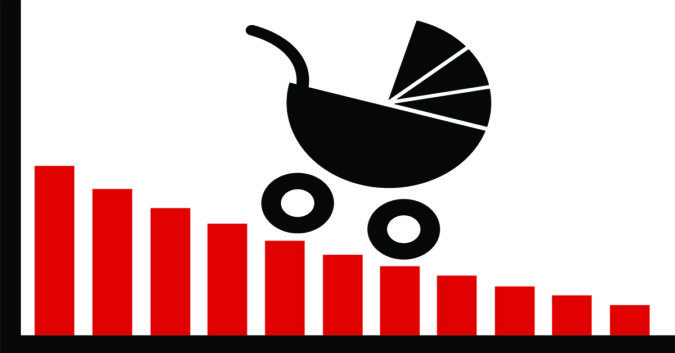The U.S. birth rate is at its lowest in decades. But where before this so-called "baby bust" was thought to be triggered by COVID-19, experts are now saying we can't be sure — yet.
According to provisional data released on May 5 by the U.S. Centers for Disease Control and Prevention (CDC), about 142,000 fewer babies were born in the U.S. in 2020 compared to 2019. That's an overall 4% drop in birth rates.
Technically, these numbers provide little insight into whether the pandemic is to blame, since the vast majority of babies born in 2020 were conceived before the pandemic. However, the data could be early evidence that COVID-19 will accelerate the birth rate decline further in 2021 and could even point to ways the pandemic will shape our society for years to come.
What are the factors influencing this dramatic decline in birth rates? How else is the coronavirus influencing American society? And how, all things considered, will it influence our future?
The Baby Bust, Other Birth Trends, and the Pandemic Forces at Play
The CDC's report didn't come with an analysis for why birth rates are declining, but other research suggests that multiple factors are at play.
On one hand, the decline could simply be indicative of a years-long trend of women delaying pregnancy. 2020 was the sixth straight year the U.S. birth rate fell by an average of 2% per year. Among younger women, the rate dropped by as much as 8%, suggesting a big social shift to starting families later in life.
On the other hand, the pandemic may be not just continuing the decline but exacerbating it. COVID-19's impact on births may not be any different than that of other economic crises, like the Great Depression of the 1930s, when births dipped as women put off having babies due to similar economic uncertainty, financial instability, and health-related anxieties.
But after the Great Depression, the birth rate picked up as the economy started to bounce back. The difference today is that America's declining birth rate — regardless of COVID-19 — is just one factor in a wider demographic shift. Kenneth Johnson, a demographer at the University of New Hampshire, says that fewer births were already combining with rising deaths and less immigration to slow the population's growth.
Then, of course, the pandemic hit, pushing death rates higher and birth rates lower and appearing to intensify this trend and others. Researchers are also investigating the impact of COVID-19 on other pregnancy outcomes besides birth rates.
For example, a recent study published in the American Journal of Obstetrics and Gynecology projected a rise in the number of women who die during childbirth as a result of the coronavirus, while the National Institutes of Health (NIH) announced last year it would investigate whether birth injuries were on the rise because of the pandemic.
The new CDC report also found a slight dip in preterm births from 10.23% in 2019 to 10.09% in 2020, marking the first time preterm birth rates have fallen since 2014.
A Sobering Look to the Future
The CDC data remains provisional and could change. In general, more research is needed to explain the link between the coronavirus and pregnancy outcomes. But the real impact could be seen in data from this year. All babies born in 2021 will have been conceived after the health crisis began. So, will the downward trend continue?
It's too soon to say, though there are hints that it will. The birth rate dropped in 2020 by 4% overall but fell most sharply in December, by about 8%. That's notable because December was the first month when most babies born would have been conceived after March, when the U.S. declared the pandemic a national emergency.
Researchers predict that in total, the U.S. could see a "baby bust" of 300,000 fewer births in 2021 — again, allowing for factors like economic data, anxiety, and social conditions as the pandemic continues to generate tremendous uncertainty in our lives.
And though it's only one piece of the picture of America's shifting demographics, COVID-19 could have huge implications if it does deepen the already declining birth rate, according to Johnson.
“At some point, the question is going to be: The women who delayed having babies, are they ever going to have them? If they don’t, that’s a permanent notch in the American birth structure," said Johnson, who found that a total of 25 states saw more deaths than births last year. "With births still declining and nearly 200,000 COVID-19 deaths already this year, deaths will likely exceed births again in many states in 2021."
